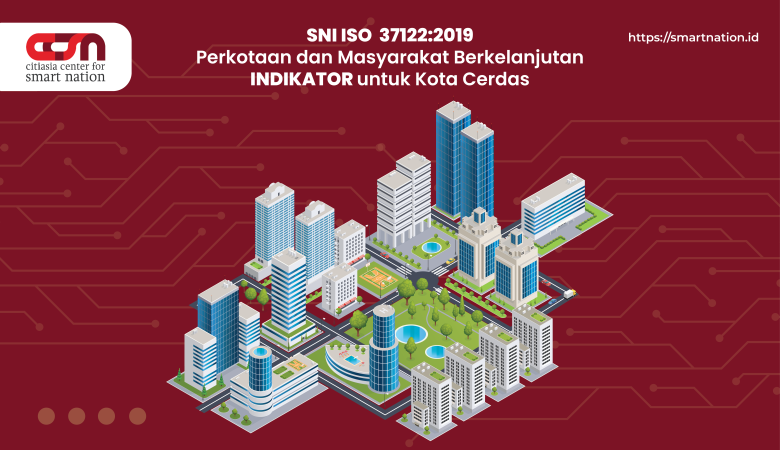
A smart grid is defined as an electricity network that can intelligently integrate the actions of all users connected to it, such as generators, consumers, and those that do both, in order to efficiently deliver sustainable, economic, and secure electricity supplies (IEC, 2010). The current implementation of the smart grid system has been tested in Indonesia through a government program is a pilot project of smart grid systems in Southwest Sumba Island in Nusa Tenggara Timur (NTT). This system is very suitable to be developed in Indonesia with the geographic condition of Indonesia consisting of 17,000 islands, large and small, where the electrification ratio in 2012 of 78% and 76.9% of electricity capacity is on an island of Java. One of the challenges in implementing smart grid systems is related to standardization, the smart grid systems will not be “smart” if it is not supported by a framework of standards for communication between devices.
In connection with these problems, the goal of this research is to identify the availability of standards in the implementation of smart grid systems in Indonesia. The results of this research identified the components and standards (ISO, the international standards and foreign standards) smart grid system consisting of photovoltaic systems, battery systems, control systems, and Energy Management Systems ( EMS ), communication systems, generator systems (biodiesel) and the micro-hydro system.

BluWaveai has signed two collaboration agreements with global innovators Hydro Ottawa, and the City of Summerside to drive optimized use of renewable energy in smarter grids by leveraging artificial intelligence (AI). Their customers will benefit from increased resiliency of electricity supply and delivery, better air quality, reduced greenhouse gases, and overall cost savings. With Hydro Ottawa, a large distribution utility serving Canada`s national capital, BluWaveai will be managing large campus-scale, grid-attached microgrids with local artificial intelligence along with citywide control using The Grid Edge Active Transactional Demand Response (The GREATDR) solution platform. The City of Summerside on Prince Edward Island, has an isolated smart grid with solar, wind, diesel generation, battery storage, and grid supply from the mainland North American grid. BluWaveai optimizes the use of renewable energy and battery storage to balance diesel fuel consumption with grid energy imports.
As part of these allocations, both suppliers quantify the additional benefits of artificial intelligence to predict and optimize power generation and load in the supply area. Utilities provide knowledge of live networks and utilities to improve BluWaveai’s innovation in artificial intelligence. With the advancement of technology, the demand for electrical energy has increased significantly, which poses a challenge not only for its products but also for its distribution. This increase in demand is increasing the complexity of the power grid by increasing requirements for reliability, efficiency, security, environment, and energy sustainability. These are part of the power grid in the smart direction and eventually became known as the concept of today’s “smart grid”. This is a conceptual approach that implements all intelligent features to make your distribution system more efficient, reliable, and sustainable. This article provided an overview of the “smart grid”, its features, and various aspects of the power distribution industry. It also describes how these technologies are changing and are likely to further develop and enhance distribution systems.

BluWaveai’s distributed AI-based software optimizes the operation of smart grids and microgrids. Use both real-time and archived data to accurately predict load and renewable energy generation capacity and send recommendations, signals, and actions for optimal management of network resources. The BluWaveai solution consists of edge and cloud data center components that can be licensed in the SaaS model. BluWaveai Edge is installed at the aggregation point of IoT sensors, measurement devices, and other data sources. The physical location can be an edge computing node, a private data center, or a public cloud. BluWaveai Center machine learning runs in either a private data center or a public cloud, collects data from edge nodes, trains AI models, and coordinates functionality across multiple BluWaveai Edge locations. This includes an ensemble of machine learning and statistical technologies that discover patterns in data and perform predictive analytics and real-time pattern recognition based on a portfolio of patents filed with the USPTO this year. AI models include wind, solar, battery charge, load, and energy market prices.
BluWaveai Edge and Center products are used in these deployments. Customers of additional qualified early adopters in the utility and microgrid markets will be able to access these products in the second half of 2018. These Canadian innovations provide a foothold for cleaner energy around the world.
Further development of technology and devices Economical and environmentally friendly energy use road. The development of the smart grid concept can affect everyone Future demand for the best possible use of energy. Reduce CO2 emissions and integrate them into a stronger renewable energy mix. It may be a major change from the past Grids and consumer behavior regarding energy use Improves the reliability, efficiency, and quality of power supply. Government action is needed to facilitate the adoption of intelligent grids. This article pointed out the need for an upgraded traditional power grid and smart, like a researcher. Implement the Network concept of distribution network. Still there There are many possibilities for improvement and implementation. This is just the beginning of a new era in modern networks. It’s still difficult to predict how far research will go to the smart grid. It is necessary to fully implement this concept, but more recent research Smart meters, demand-side management systems, self-healing, big data, etc. are sources of motivation for smart grids technology.
Author: Diva Maharani | Illustrator: Akbar Nugroho









Leave a Reply